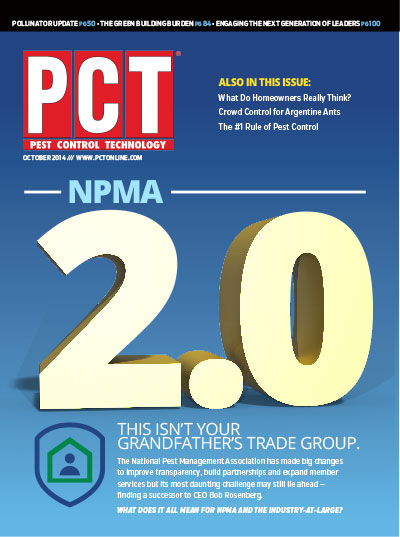
PCT file photo
Editor’s Note: The following was adapted from Techletter, with permission from Pinto & Associates.
When measuring liquid pesticides, you usually are measuring a certain number of ounces into your sprayer. When measuring dry pesticide formulations, you also may be measuring ounces of product — but you better not use the same measuring cup. In the first case, you measure ounces by volume; in the second, you measure ounces by weight. A liquid ounce is not the same as a dry ounce.
A liquid ounce always measures as 1/128 of a gallon, no matter what liquid you are measuring. If you

painstakingly added 128 ounces of a liquid, 1 ounce at a time, into a sprayer, you would end up with 1 gallon. This is called a volumetric measurement because 1 ounce of any liquid takes up the same amount of space and fills the same volume.
On the other hand, a dry ounce is always 1/16 of a pound, again no matter what you are measuring. But the amount of material that it takes to get 1 dry ounce of weight varies greatly depending on the density of the material. For example, if you measure 4 ounces of baking powder into one glass and 4 ounces of salt into another glass, you would see a noticeable difference in the amount in each glass. The powder is less dense than the salt and takes up more space in the glass, yet each weighs ¼ of a pound.
Be careful when using a measuring cup. Never use the same measuring device for liquid and dry formulations. If you use a measuring device for liquid volume when you should be using a device to measure a dry formulation, you will change the intended application rate dramatically. If a measuring cup is for liquid ounces, it should say: liquid ounces, fluid ounces, fl. oz. or liq. oz. on the cup. If a measuring container is not designated for liquids, don’t assume that it is for dry measurement instead. Manufacturers of dry pesticide formulations usually provide a volumetric measuring tube that is calibrated only for their product. Since different dry formulations will have different densities and weights, you cannot use a measuring tube intended for another product. In the absence of a product measuring tube, however, you can use a sensitive scale to weigh out dry ounces.
Authors’ note: For more on measuring pesticides, visit http://bit.ly/1wfU4oa.

Explore the October 2014 Issue
Check out more from this issue and find you next story to read.
Latest from Pest Control Technology
- Orkin Helps Local Youth Sports Program Design a ‘Killah’ New Logo
- ABC Home & Commercial Services Celebrates 75 Years in Business
- NPMA Academy Announces Full Schedule
- Truly Nolen Promotes Marchello, Christopherson and Bolton to Managerial Positions
- TruGreen Announces 2024 List of Top 20 U.S. Buggiest Cities
- Why PMPs Use Rodent Bait Stations
- NPMA’s Women’s Forum Encouraged Female Leadership, Growth Opportunities in Pest Control
- GoPest Expands to Birmingham and Huntsville (Ala.)





